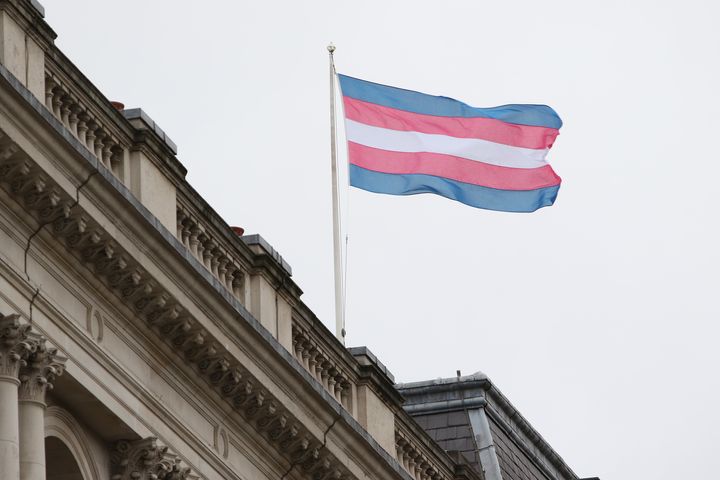The Three Faces of Patriarchal Power
When radical feminists use the word "power," what exactly do we mean?

As feminists, we talk a lot about power—namely the fact that women and men have unequal amounts of it. But when we use the word "power," what exactly do we mean? The political and sociological understanding of power has evolved over time. A traditional definition of power would say something like "Men have power over women to the extent that men are able to make women do what women otherwise would not do."
While the breadth of this definition is valuable, it lacks the nuance to explain the different ways power can be used and the different forms power can take. I’ll be focusing on a different framework of power— with three dimensions. Each of these builds upon the last, and each works upon us in a different way. When all three faces exist together, this is called hegemony, or total domination.
The First Dimension: The Guns and the Money
The first dimension of power is simple and intuitive. It is about violence, threat, and dependency. If your professor wants you to wash his car, for example, and just so happens to carry a baseball bat with him, he can kneecap you until you acquiesce—this is violence. He can threaten to kneecap you—this is a threat. He can fail you in his class if you refuse—this is dependency.
Whatever the specific situation may be, this first dimension is about resources; resources like strength, violence, allies, authority, and wealth. It’s about being able to directly force someone to do what they otherwise wouldn’t. Simply put, it’s about who brings the guns and the money to the table.
In relation to women, of course, men bring both. In domestic partnerships globally, wealth is a resource to which men tend to have greater access than women. Their wives, then, whether because they stay at home or because their earnings are more limited by the wage gap, tend to be financially dependent upon them. In addition to financial dependency and control, there are also the literal guns; most of the firearms in the US are owned by men.
Finally and most importantly, men on average hold a physical strength advantage over women, and this disparity in resources grants men power over women, and it’s this fundamental difference that led them to have the other resource differentials that they have today. This power is one that men often use. We see it in domestic violence, sexual assault, the fact that domestic battery is the most frequent killer of pregnant women. Many men use this resource of strength deliberately, to threaten and intimidate. But even when they don’t use it, the threat of it is always there, hanging over us, for the existence of a power dynamic requires neither a deliberate actor nor a conscious motive.
The Second Dimension: Control of the Agenda and Atomization
This second dimension of power takes a step back from the explicit violence and threat of the first dimension. Instead of controlling a person directly, it’s about controlling the agenda. This means limiting the options we’re able to choose between and the debates that can even be had.
This agenda-setting happens in the halls of power—what bills are proposed in the Senate, for example, and which ones never even come up for public discussion. Those with this dimension of power not only have the resources, but are able to control how those resources are applied, often in order to exclude other voices entirely.
Beyond the literal control of the agenda in the halls of power, there’s also the control of the agenda in a more public-facing way—through the media, where the same process keeps certain topics from ever becoming part of the public discourse.
Radical feminist women are facing a media blackout and this blackout keeps us from finding one another. We are kept atomized—kept as individual, isolated atoms, or units, rather than a cohesive whole. The genius of this kind of atomization is that it makes you think no one else has a problem and therefore the problem must be with you—you’re not kind enough, not understanding enough, not evolved enough. It makes you think that you’re the insane one. This loneliness of seemingly being a minority of a minority keeps people silent and acquiescing, in accordance without evolved social instinct.
“The genius of this kind of atomization is that it makes you think no one else has a problem and therefore the problem must be with you.”
If you were dealing with an unfair boss, for example, you alone probably wouldn’t go against him if it were just the two of you. One-on-one, he holds both the authority and the power; you are dependent upon him for your wages and for a good reference later on. You fear being punished for your words with unpleasant tasks, fewer hours, no promotion, loss of a good reference, even the loss of the job entirely. But if you knew that enough of your coworkers felt the same way—then you might say something.
Atomization keeps people trapped in this one-on-one dynamic, in a situation where we are, by design, comparatively powerless. We are separated from one another, and thus unable to take advantage of our strength in numbers.
A parallel strategy is something called the mobilization of bias, which is a way to control the agenda through the use of labels. This is what’s at play when gender ideologues call women "conservatives," "bigots," "transphobes," "prudes," "terfs," "feminazis." Doing this allows them to tap into all the associations and connotations that go with the label they throw at a woman, and not have to do the work of refuting an actual argument.
So this second dimension is itself two-fold. It serves to fragment the dissenters, and then, if they somehow manage to organize despite that, it is able to control the arena of the discussion through discursive control.
The Third Dimension: Internalization
The third dimension of power is the most insidious because it’s the most subtle. This is the realm of internalized misogyny, internalized homophobia, internalized racism. Male-identified women, in the traditional second-wave sense (women who identify more with male interests than with their own), fall here.
This dimension doesn’t force us to act against our own interests, like the first. Nor does it keep us isolated and ignored, unable to voice our own interests, like the second. Rather, this final dimension makes women think our own interests are different than they are, molding us to what the dominating class needs us to be.
This idea is likely intimately familiar to any radical feminist; it’s what liberal choice feminism has done so superbly—made women desire what men desire them to, and think it’s not only their own idea, but empowerment itself.
What do we learn from applying this theory of power to current feminism?
I find the second dimension especially insightful. If they are trying to atomize us and silence us, (spoiler: they are) we must not let them. Yes, there are risks. There are always going to be risks. But keeping us silent and divided is how they win, and the only way for us to escape the second dimension of their power over us is for us to come out of the shadows and into the daylight. While this framework of power, with its three dimensions, is more nuanced than the traditional, one-dimensional understanding of power, it isn’t perfect.
John Gaventa, for example, in his book on coal mining communities in Appalachia, proposes that power relations are not only about the actions of the powerful, but also about the non-action of the powerless. Their non-action, he writes, is no coincidence. He calls this non-action quiescence. Just as the powerful learn to exert their influence, so do the powerless learn helplessness.
In Gaventa’s book, coal miners began to organize in small, seemingly irrelevant ways that flew under the radar of those in power. The first thing the mining families did, for example, was organize a local trash pickup. This one action led to greater and greater actions, which became increasingly political, despite the miners’ fraught position in a company town. The only way to unlearn learned helplessness, it turns out, is to act. Actions, no matter how small, no matter whether they succeed or not, remind us that we have agency, paving the way for future possibilities. We are autonomous beings, and we can leave our mark on the world.
4W provides paid writing work for over 50 women in countries spanning the globe. This work is made possible thanks to our paid monthly subscribers. Join today to support our work!
Enter your email below to sign in or become a 4W member and join the conversation.
(Already did this? Try refreshing the page!)





Comments